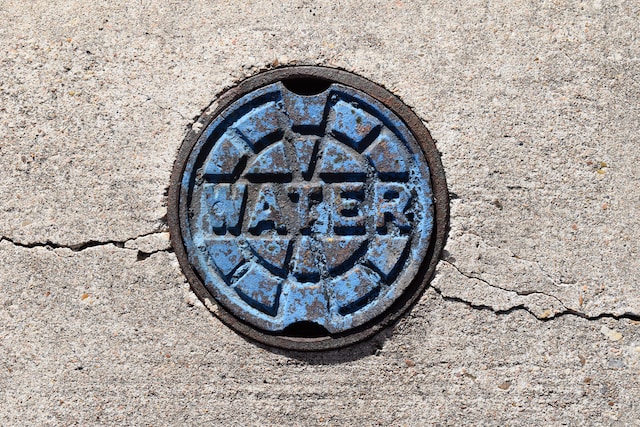As a pet owner, you know your furry, feathered, or scaly friend is a beloved part of your family. But have you considered how your pet might affect your home insurance? That’s where pet-friendly home insurance comes into play. In this guide, we’ll navigate the often tricky waters of insurance considerations, so you can make an informed decision that best suits your needs and those of your pet.
Pet-related home insurance considerations
Owning a pet introduces several unique considerations into the equation of home insurance.
Liability coverage for dog-related incidents
Liability coverage is an integral component of most home insurance policies. This coverage provides financial protection if a guest gets injured on your property, which includes potential injuries caused by your pet. For instance, if your dog accidentally bites a visitor, the medical bills could be covered by your insurance policy.
However, liability coverage differs between insurance companies. While some insurers might fully cover dog-related incidents, others may exclude specific situations or breeds. Some may limit the amount they will pay out for pet-related claims. Review your policy’s liability terms and verify how they apply to your pet.
Home insurance dog breed restrictions
Many insurance companies utilize breed restrictions within their policies. These restrictions are typically applied to breeds perceived as “high-risk” due to their reputation, size, or historical behavior. Common breeds often listed as “high-risk” include Pit Bulls, Rottweilers, and German Shepherds.
If you own a breed listed as high-risk, you may face higher premiums, or your pet might be excluded from the policy altogether. Sometimes, you may need help finding an insurance company to provide coverage. Consequently, check if your breed is covered before you sign a policy and understand the potential impacts of these restrictions on your insurance coverage and premiums.
Coverage for pet injuries or illnesses
While your home insurance may offer liability coverage for incidents involving your pet, this typically does not extend to cover your pet’s injuries or illnesses. In other words, if your pet gets sick or hurt, your home insurance policy likely won’t cover the associated veterinary bills.
Pet health insurance is a separate policy that covers a portion of your pet’s medical bills, similar to health insurance for humans. On the other hand, a pet health endorsement is an addition to your home insurance policy that offers limited coverage for your pet’s medical expenses.
Both options have their pros and cons. Pet health insurance usually provides more comprehensive coverage but at a higher cost. A pet health endorsement is typically less expensive, but the coverage is also more limited.
Researching pet-friendly home insurance providers
Research and consideration are necessary when finding a home insurance provider that caters to your pet-related needs. Here’s a step-by-step process to guide you through the selection journey:
Identifying insurance companies with pet-friendly policies
Not all insurance providers are created equal, especially when accommodating pets. Some providers are known for their pet-friendly policies, offering comprehensive coverage that includes a wider range of pet-related incidents or a larger variety of breeds.
To identify these providers, you’ll need to conduct a detailed investigation. Start by running an online search to shortlist providers known for pet-friendly policies. Consider asking friends, family, and fellow pet owners for recommendations. Online forums and social media groups can also be valuable resources for gathering firsthand experiences and advice.
Remember, finding the right fit is not a one-size-fits-all endeavor. What works for one pet owner might not work for another. You must find a policy that meets your needs, considering your pet’s breed, size, age, and behavior.
Checking policy language and exclusions regarding pets
Once you have shortlisted potential providers, the next step is reviewing the policy. Pay particular attention to how they define pet terms, the exclusions listed, and any endorsements that could affect your coverage.
Exclusions specify what is not covered by the policy. If an exclusion applies to your pet or its breed, it means any damage or liability related to it won’t be covered. Conversely, endorsements are modifications to the standard policy—these can either add or exclude coverage.
If anything is unclear, don’t hesitate to contact the provider or a trusted insurance advisor for clarification.
Comparing coverage options and pricing
Look at both the cost and the extent of the coverage offered by each provider.
Start by comparing quotes. Many insurance companies offer online calculators or quick quote services that give you a ballpark figure of the potential cost. However, don’t let price be the only determining factor.
Equally important is the coverage. Are they offering the breadth of coverage you need? Do they cover the specific liabilities associated with your pet? Does the policy include the necessary endorsements, or are these add-ons that will incur additional costs?
Tips for securing pet-friendly home insurance
Here are some expert tips to help you secure a pet-friendly home insurance policy that suits your needs.
Disclosing accurate and detailed information about your pet
One of the most important aspects of securing pet-friendly home insurance is transparency about your pet’s details. This includes your pet’s breed, size, age, medical history, and behavioral traits. If you own a dog, you might also be required to share information about its bite history.
Misrepresenting any information about your pet can result in the denial of claims, higher premiums, or even policy cancellation. Always provide accurate and complete information to ensure your insurance coverage is valid and effective.
Providing proof of responsible pet ownership
Most insurance companies appreciate responsible pet owners and may offer better terms to those who can provide evidence. So, what constitutes proof of responsible pet ownership?
Proof of obedience training or behavior classes, especially for dogs, can work in your favor. Certificates from recognized training programs can demonstrate that your pet is well-behaved and less likely to cause accidents or damage.
A clean health record is another component. Regular check-ups and up-to-date vaccinations show that you take good care of your pet’s health, reducing the chances of illness or injury.
Installing safety features and measures
Home safety features can lower your insurance premium, but the same applies to pet safety measures. For instance, a secure fence can prevent your dog from escaping and causing accidents. Similarly, a pet-friendly security system can alert you if your pet is distressed or causing mischief at home.
Indoor safety measures, such as gates to restrict access to certain areas or safe storage for potentially harmful substances, can also reduce the risk of pet-related damage or injury.
The key to securing the right pet-friendly home insurance lies in thorough research, understanding policy terms, and presenting yourself as a responsible pet owner. By following these steps and considering the unique needs of both your home and your pet, you can ensure comprehensive and tailored insurance coverage that provides peace of mind for you and protection for your family.




